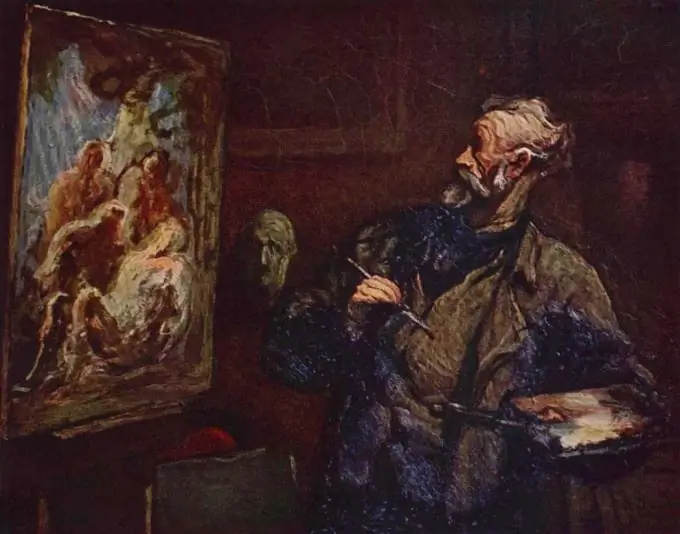Despite the existence of copiers and scanners, many artists today copy paintings by hand. The hardest part of this process is to keep the proportions exactly. Special devices will help you with this, some of which any home craftsman can make on his own.

Instructions
Step 1
The first way to copy pictures in proportion is to use a pantograph. If you do not have this device yet, make it yourself. The pantograph device is shown in the figure. In the middle of the lower part of the device is a spring-loaded pencil, which prints the image on the copy. In the lower right corner there is a probe that the artist manually moves over the original. By changing the position of this probe on the ruler, you can select the copy ratio. To protect the original from the impact of the probe, cover it with a thin sheet of glass or plexiglass. Copy only the contours of the drawing with a pantograph, and paint it by hand. If necessary, make a copy on paper, and transfer the image to the canvas using a carbon copy.
Step 2
The disadvantage of the pantograph is its cumbersomeness: it is several times larger than the picture, which can be copied with it. To reproduce large paintings, you will have to make a very large pantograph. If you want to copy a large painting without scaling it, use the second method: Take a sheet of glass and place it vertically. Place the original to the left of the sheet, and the copy blank to the right. Light the original with a table lamp. By placing your head to the left of the glass, you will see a virtual image aligned with the workpiece. It remains to circle it, and then paint. The copy will be mirrored; if you are left-handed, you will need to position the original and lamp on the right, and the copy blank on the left. In this case, look at the glass on the right. To make the copy not mirrored, transfer the image in this way onto tracing paper, then turn it over and transfer the copy to the canvas using carbon paper. Then paint the image onto the canvas.
Step 3
If you do not want to completely abandon the use of modern technologies in the process of manually copying a picture, use the following method. Take a picture of the painting with a digital camera, then project the image with a computer projector directly onto the canvas. It remains only to circle it, and then paint.






